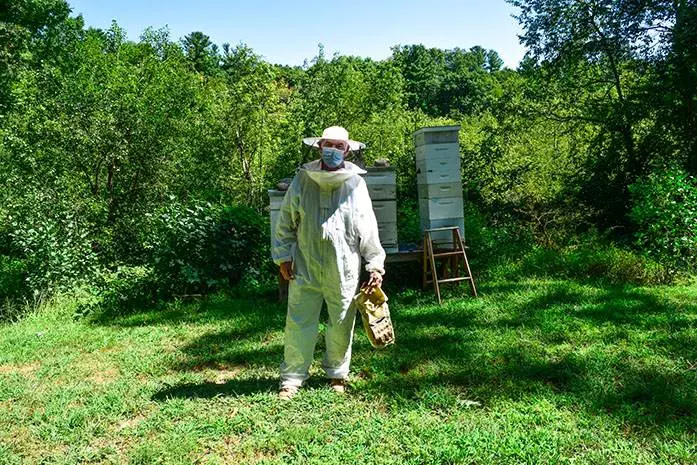Honey Supers, The Beekeepers Harvest

Every beekeeper looks forward to the day when they are able to reap the rewards of our hives— honey! Local honey that will soon be enjoyed by friends, family and of course, our loyal clients. With summer nearing its end, it is time for our final harvest of the year.
Anatomy of a Hive
Before jumping into the harvesting process, let us first explore the anatomy of a hive.
The lowest area of the hive is the bottom board, with the entrance to the beehive. On top of the bottom board, sit deep hive bodies – wooden boxes each containing 10 removable frames of comb where the queen lays eggs. This part of the beehive is called the ‘brood chamber’. Throughout the season, we add ‘supers’ on top of the brood chamber. ‘Supers’ are wooden boxes with frames of comb where the bees store honey. A super is typically half the depth of a brood for practical purposes- it would simply be too heavy to lift once occupied with the honey overflow! Each honey filled super can weigh as heavy as 50 pounds.
A ‘queen excluder’ is used to separate the brood chamber and the supers, refraining the queen from laying eggs outside of the brood chamber. However, the small worker bees are able to fit through the separating grate- allowing for additional honey storage in the supers throughout the season. On top, the hive has an inner cover and an outer cover. The inner cover keeps the hive tightly closed on top and the outer cover serves as extra protection against the weather.

Honey Supers, The Beekeepers Harvest
A honey super not only allows for the abundance of honey to harvest, but it is an important aspect of maintaining your beehive’s health. Less congestion in the hive ensures our bees are healthy, happy and as productive as possible. Once the brood chambers are sufficiently stored with honey, the hive then works toward storing excess in the above supers. A beekeeper only harvests from a super, as the storage within the brood sustains the bees throughout our cold, New England winters.
The number of supers is dependent on several variables, such as the size and strength of the hive and environmental factors that season. We currently have four hives, two of which newly arrived this Spring. Throughout the summer, I have been tedious to check the supers. When your first honey super is about ⅔ full of honey, it is ready for another super to be added on top of it. While a good hive typically provides 1 super, this year our mature hive provided our harvest with four supers. A strong queen with good genetics allows for the entire hive to follow suit.
With summer coming to an end and the supers overflowing, it’s time to extract. While I have done a fair share of honey extractions in my time, I have now enlisted the help of our dear friends at New England Beekeeping to ensure this delicious reward lands on the doorstep of our clients in a timely manner. With the help of a smoker to distract the bees, the capped frames are removed from the supers. The term “capped” means all the honey in the honeycomb has been capped off by wax, indicating it is ready to be extracted. These frames are taken off site by NE Beekeeping to be uncapped and the honey removed. With the help of our busy bees, we are expecting to gain over 130 pounds of delicious, golden honey from this last harvest.
READ OUR
Related Articles
Locations






